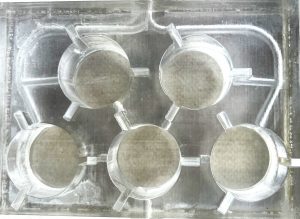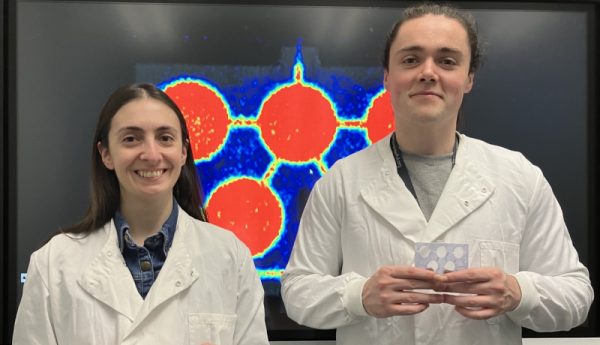
The novel 3D body-on-chip developed has an innovative multi-organ design and capillary flow that uniquely facilitates homogenous drug circulation to all organs simultaneously. It closely mimics how a drug travels through the human circulatory system and distributes through a patient’s organs in the body over time.
Application
Development Status
Ongoing development - proof of concept validation
IP Status
PCT application filed March 2024
Commercial Offerings
Licensing or collaborative opportunity
Opportunity
Only 2% of compounds progress through the drug discovery pipeline, leading to extremely low clinical success rates of a drug candidate in humans, creating a need for better human predictors before starting in vivo animal work for drug development.
The 3D-printed device developed is a novel body-on-chip with an innovative multi-organ design and capillary flow that uniquely facilitates homogenous drug circulation to all organs, unlike other chip devices that use sequential perfusion or diffusion. It closely mimics how a drug circulates through a patient’s body and how the drug would be distributed throughout organs of interest without a need for animal testing.
Moreover, it is theoretically compatible with any transwell-based cell model – enabling the opportunity to test drugs in various disease models – including cancer, cardiovascular diseases, neurodegenerative diseases and immune diseases. In this way, the novel drug distribution chip allows for better predictions of in vivo success, reducing the failure rate of drug candidates in small animal studies - saving time, money, and animal life.
Technology
The device is a 3D-printed block containing a network of five "organ" compartments designed to hold 5 different cell models of interest, with pilot studies using compartments that replicate the human heart, lungs, kidney, liver and brain. These “organ” compartments have interconnecting "capillaries" through which the drug is circulated via a standard peristaltic pump. The capillary flow mimics the circulatory system to distribute the media equally to all organs from the central organ in parallel for homogenous perfusion rather than sequential perfusion from organ to organ in the currently available body-on-chips.
Affordable, common, and simple lab techniques including simple cell culture and high-performance liquid chromatography can be used to quantify drug uptake over time in PET kinetic models to predict human distribution.
Benefits
Publications
Quote: TEC1104529

A novel 3D printed device that could replace the need for drug and chemical safety testing on animals has received new funding.

Senior Technology Transfer Executive
College of Science and Engineering
College of Medicine and Veterinary Medicine